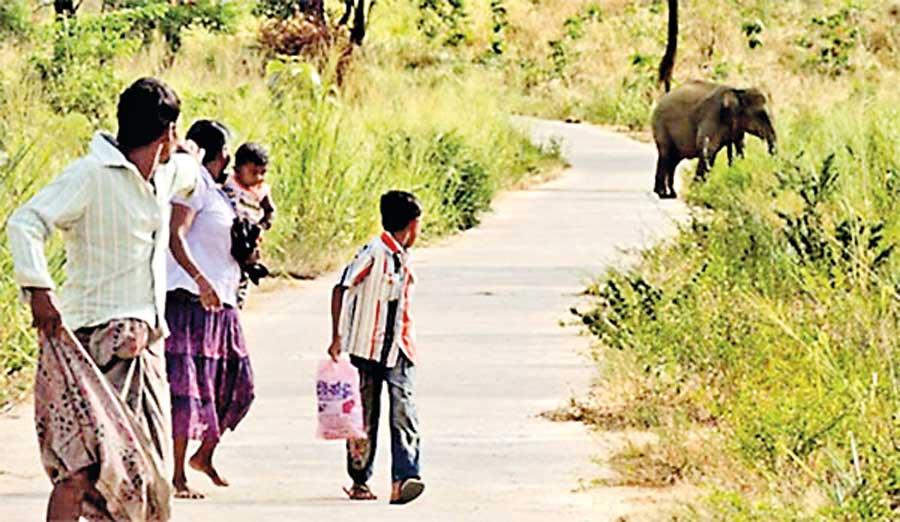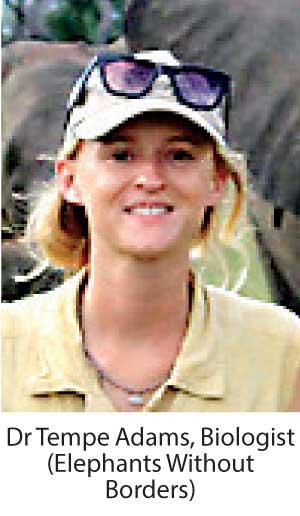30 Nov 2022 - {{hitsCtrl.values.hits}}

Humans and elephants
With the recent Kebithigollewa unrest and the steadily rising human-elephant conflict in Sri Lanka, people keep demanding a proper solution to this issue, which had always been one of the major wildlife concerns in the country since the beginning of time.
demanding a proper solution to this issue, which had always been one of the major wildlife concerns in the country since the beginning of time.
2019-2020 reportedly saw 407 elephants killed as against the previous annual average of 272. The number of people killed also increased from an average of 85 humans to 122 per year. Consequently, this makes Sri Lanka to have the highest casualty rate in the human-elephant conflict in the world.
Given this ongoing conflict and concern regarding elephant conservation in Sri Lanka, Minister of Agriculture and Minister of Wildlife Mahinda Amaraweera recently said that a new countrywide elephant census was expected to be conducted next year and assured that a long-term programme to reduce human-elephant conflict would be prepared as well.
Dr Tempe Adams, a biologist from the Botswana-based wildlife NGO Elephants Without Borders (EWB) joined a discussion on elephant conservation at the Wildlife and Nature Protection Society and shared suggestions and ideas with naturalists in Sri Lanka regarding elephant conservation, from her personal experiences and success stories in Africa.
In her presentation, she highlighted the threefold approach that they used in order to mitigate this issue.
1. Understanding the movement and elephant ecology of those elephants that put themselves into these conflict situations. Both the “urban” and “agricultural” elephants, who are often referred to as the “problem elephants.” It’s really important to understand why they’re moving and where they are and understand their motivation behind it.
situations. Both the “urban” and “agricultural” elephants, who are often referred to as the “problem elephants.” It’s really important to understand why they’re moving and where they are and understand their motivation behind it.
2. Creating meaningful mitigation programmes. Developing and creating sustainable farmer-endorsed mitigation strategies that would relieve the conflict and combat each of the elephants’ senses.
3. Providing community education at multiple stakeholder levels. It’s impossible to do anything without knowledge and imparting that knowledge to the communities and the more younger people get involved in this, the better.
She highlighted the importance of collecting baseline information such as, what has been used in the past, what works and doesn’t work and learning from farmers’ experiences.
The importance of identifying conflict hotspots and spotting the reasons why other programmes have failed in the past was also highlighted.
During the discussion, Adams also explained several reasons why these mitigations have failed in the past according to their experiences. Some of the major reasons are:
It was noted that educational awareness should be aimed to improve the communities’ tolerance and respect for coexisting with wildlife. In Sri Lanka, this is yet to be improved.
During the discussion, it was stressed that information is key to conservation. Another concern is safety. Therefore coexistence and safety wildlife talks are vital. Adams explained that a lot of this education is about basic safety and basic elephant ecology. This includes presenting talks to local businesses, safari lodges, training colleges and schools. Sadly very little wildlife information is in the curriculum.
If these odds are covered and if the relevant actions are implemented practically in Sri Lanka as well, gradually we would be able to reverse the damage to the elephant population in the country and mitigate our long-running elephant-human conflict as well.
23 Apr 2024 23 minute ago
23 Apr 2024 51 minute ago
23 Apr 2024 2 hours ago
23 Apr 2024 2 hours ago
23 Apr 2024 2 hours ago